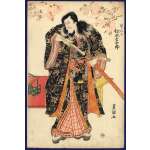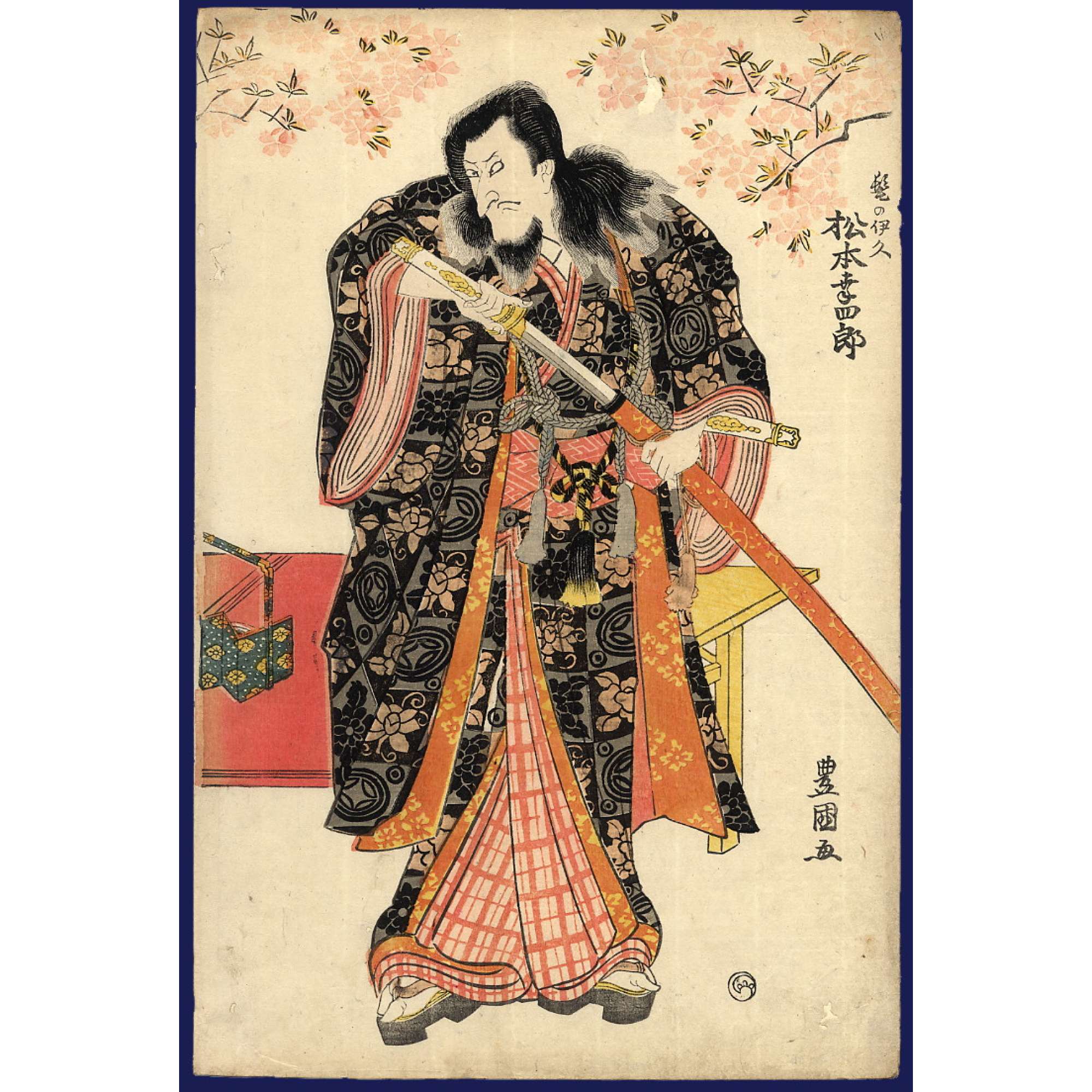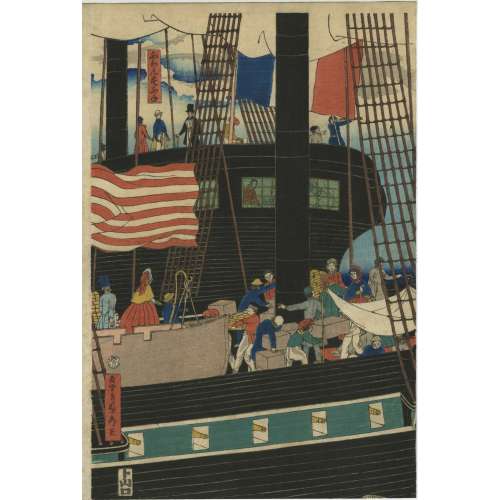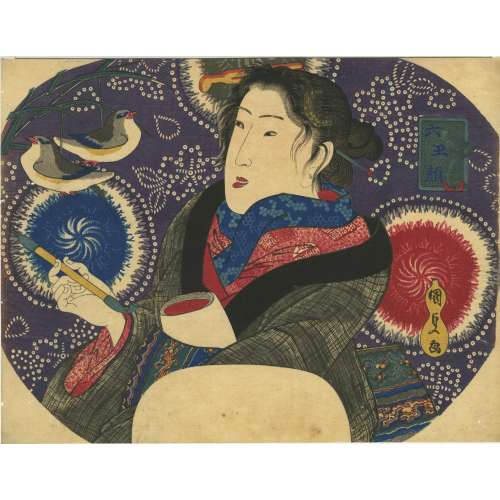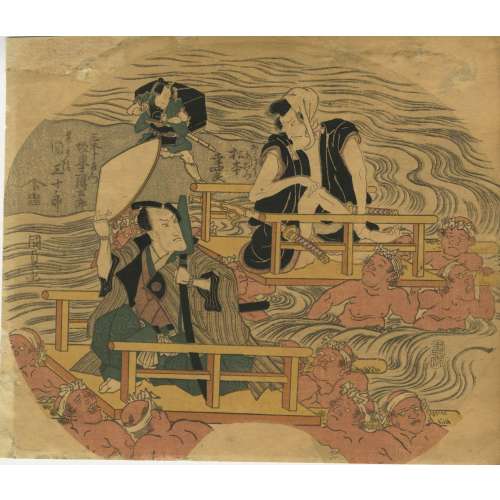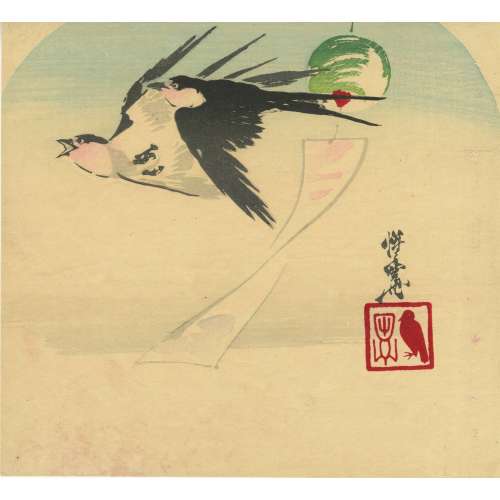Artist: Utagawa Toyokuni I (1769–1825)
Actor Matsumoto Kōshirō V plays the role of Ikyû in the drama “Sukeroku Yukari no Edo Zakura“. The roles of Sukeroku and the courtesan Agemaki are played by Ichikawa Danjûrô VII and Iwai Hanshirô V”. Ichimura Theater in Edo in 2nd lunar month of 1811.
Publisher: Chōjiya Kichi (1811-1826); Marks’ “Publishers” № 028, p. 103.
Size: Vertical ôban
Woodblock print (nishiki-e); ink and color on paper.
Signed: Toyokuni ga
My print is the right sheet of a triptych (see: Rare books exhibition in January 2013).

A lookalike triptych by Kunisada can be found in Ronin Gallery:

Data from Kabuki21:
Stage names:
Matsumoto Kôshirô V, Ichikawa Komazô III, Ichikawa Sumizô I
Guild: Kôraiya
Line number: GODAIME (V)
Poetry names: Kinshô, Kinkô
Existence: 1764 ~ 10th day of the 5th lunar month of 1838
Connection:
Father: Matsumoto Kôshirô IV
Sons: Matsumoto Kôshirô VI, Ichikawa Sumizô II
Disciples: Matsumoto Kojirô, Matsumoto Kingo I, Matsumoto Hidejûrô II
Matsumoto Kôshirô V was one of the Kabuki giants, a senryô yakusha, during the Bunka, Bunsei and Tenpô eras. In his 20’s he was a tachiyaku actor excelling in nimaime roles like Soga Jûrô Sukenari in sogamono dramas. He started to perform jitsuaku roles from the 11th lunar month of 1798 and quickly became one of the best actors for villain roles, especially in Tsuruya Nanboku IV‘s kizewamono. He had a considerable influence on actors like Onoe Kikugorô III or Ichikawa Danjûrô VII. The kata he deviced for some of the most famous roles in Kabuki history, like Gonta (“Sushiya“) or Nikki Danjô* (“Meiboku Sendai Hagi“) are still used nowadays.
“The fifth Kôshirô had a very large nose and his eyes were close together, two facial defects the print artists were fond of depicting, so that this Edo actor is easily picked out in the pictures illustrating the theatre of this time.” (Zoë Kincaid in “Kabuki, the Popular Stage of Japan“)


